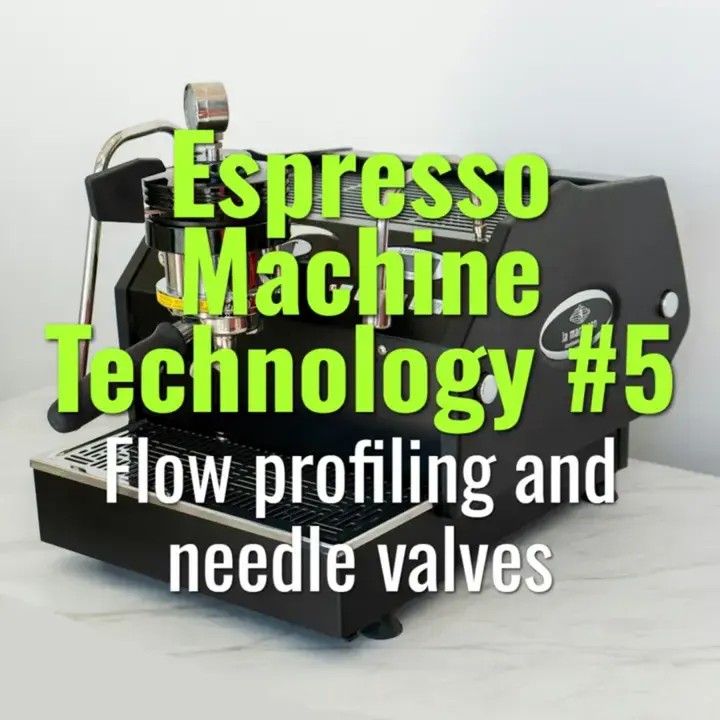Flow profiling and needle valves
How flow profiling and needle valve systems give baristas precise control over water delivery and extraction dynamics in espresso machines.
- Coffee Basics Nerds
- 2 min read
Article 5 of 12 in Espresso Machine Technology/

What is Flow Profiling?
- Definition: Controlling the volume and rate of water flow through the puck rather than just pressure.
- Purpose: Allows baristas to fine-tune extraction by managing saturation speed, flow resistance, and turbulence.
Needle Valves
- Function: Mechanically restrict or allow water flow with fine precision.
- Placement: Installed between pump and grouphead.
- Control: Can be manual (lever/knob) or electronic (programmable actuators).
Flow Profiling Techniques
- Gentle Preinfusion: Start with very low flow (1–2 ml/s) to saturate puck evenly before pressure builds.
- Controlled Ramp: Gradually increase flow rate to 5–6 ml/s during peak extraction.
- Declining Flow: Reduce flow in later phase to prevent over-extraction of fines.
- Hybrid Curves: Combine flow and pressure changes for maximum control.
Flavor Impacts
- Low Flow Start: Enhances sweetness, reduces channeling.
- Higher Flow Mid-Shot: Emphasizes body and complexity.
- Reduced Flow Finish: Smooths bitterness, creates cleaner aftertaste.
Advantages Over Pressure-Only Profiling
- More direct control over actual water delivery.
- Useful for light roasts that require careful saturation.
- Allows consistency across shots when combined with data logging.
Practical Considerations
- Requires practice to design curves that improve rather than distort flavor.
- Needle valves need maintenance to prevent scale buildup.
- Adds cost and complexity; most beneficial for high-end specialty cafés.
Summary
Flow profiling with needle valves gives baristas granular control over water delivery to the puck. By shaping flow curves—gentle preinfusion, controlled ramps, and tapered finishes—espresso flavor can be tailored with greater precision than pressure profiling alone.